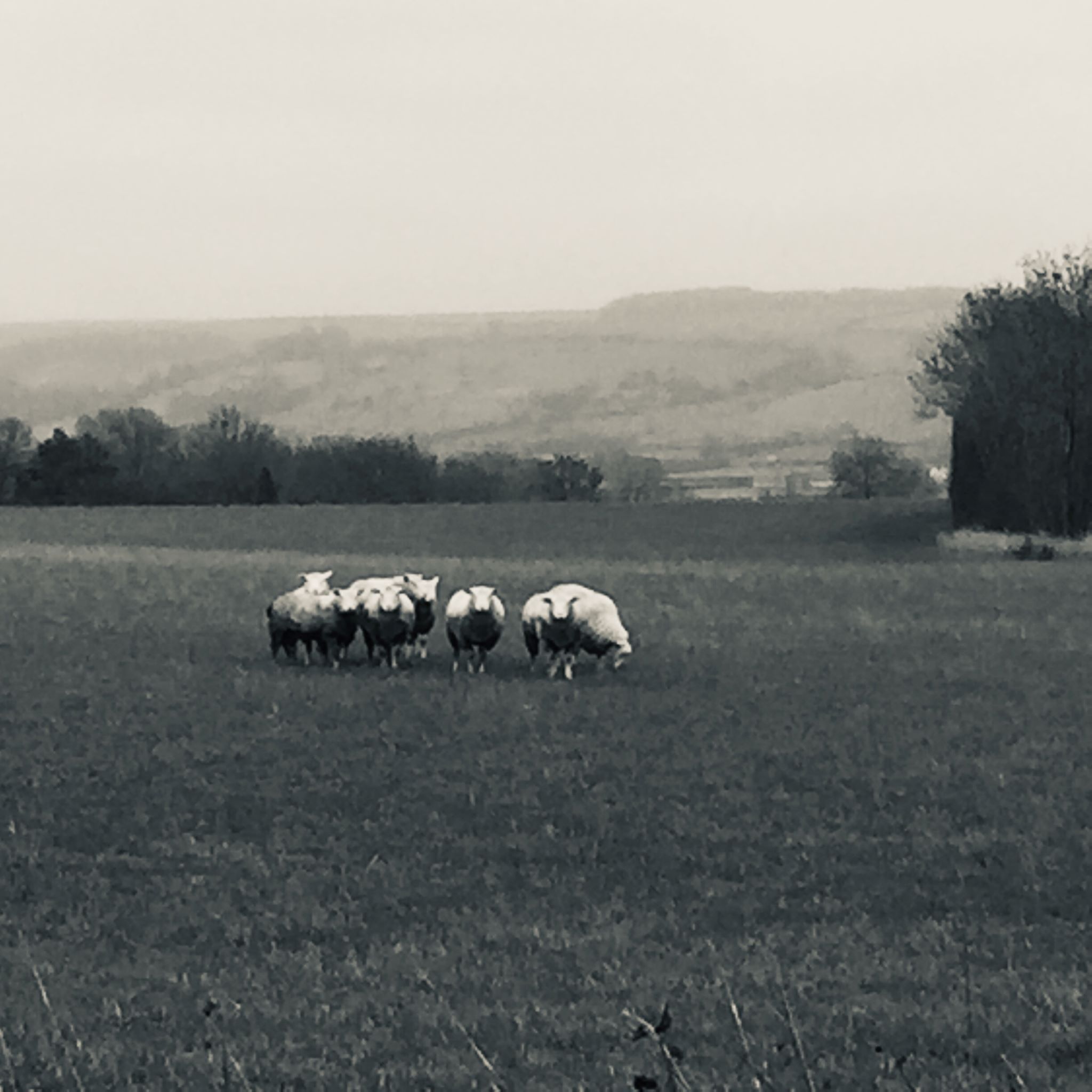The 'Reading Poetry' chapter of A111 has an online activity to select our own tiny anthology of poems from 'The Faber Book of Beasts', this was my attempt - with a few added photos.
This mini-anthology was prompted by reading one of the poems, Les Murray's 'Pigs'; a startling attempt at creating a distinct animal voice, one in which we also face square on to the process of routine animal slaughter. I decided to trawl 'The Faber Book of Beasts' for other (inevitably livestock) farming poems and explore briefly what poets may have to say about this relationship between humans and the natural world. To be included I thought that there should be at least some indication of a farm or farmer somewhere in the poem (so room for Craig Raine's 'Lamb', but not for Blake's). I found about thirteen poems in total and having decided that Heaney and Hughes could be allowed only one apiece I ended up with the following ‘collection’. A number make for quite tough reading, particularly all in one sitting - but with global livestock now outweighing wild mammals and birds by a factor of ten it feels a relationship we (particularly meat-eaters like me) should work at understanding.
1.Craig Raine, 'Pretty Baa Lamb' (pp. 208-9)
2.Richard Wilbur 'A Black November Turkey' (pp. 37-8)
The poem gives a beautifully observed portrait of the turkey in its prime, but one literally 'foreshadowed' in dark plumes 'Himself his own cortège/And puffed with the pomp of death,' It may have a 'timeless look', but the clock is running and late November will bring Thanksgiving Day.
3.Norman Maccaig 'Fetching Cows' (p. 89)
I love this simple account of gathering in cattle, perfect in taking me to the time and place - the swaying ABA rhyming pattern occasionally disappearing in the enjambment of stanzas three and four then sounding out again. The final metaphor is a perfect descriptor of that burdened swinging walk, 'The black cow is two native carriers/Bringing its belly home, slung from a pole.', but I struggled with those 'natives' for quite a while. I was going to have to leave it as just 'of its time' (and nothing wrong with that) but then I was struck by the thought, what could be more 'colonised', more 'enslaved' by man than nature? Suddenly a wholly different view point opened up.
4.Seamus Heaney 'Cow in Calf' (p. 62)
A real sense of 'contact' in this poem, Heaney absolutely takes me into the stall with this cow - I can feel the stinging in my hand as we try and move her on. Three stanzas of free verse, but finishing in a flourish of repetition and internal rhyme, 'The udder grows. Windbags/of bagpipes are crammed there/to drone in her lowing.' 'Windbags/bagpipes' 'her.../her.../her...' 'drone/lowing/going'. Yet again the farming cycle of birth and death is emphasised, this calf, like all the others, is part of a process.
5.Les Murray 'Pigs' (p. 206)
This reminded me of another one of Les Murray's frequently anthologised poems 'The Cows on Killing Day' (https://griffinpoetryprize.com/poem/the-cows-on-killing-day/), in particular with the 'herd-speak' of 'Us’ and ‘we'. Here, verbally and syntactically it tries to shock us in to animal eyes, both when talking of an ancestral dream-time, 'Us back in cool god-shit. We ate crisp./We nosed up good rank in the tunnelled bush.' or when brought up cold against the image of hung carcasses, '...This gone-already feeling/here in no place with our heads on upside down.' Of course, human language, however twisted, constrains it to the anthropomorphic - but it is at least exciting to even try and meet animals on their own terms.
6. Ted Hughes 'View of a Pig' (pp.275-6)
To end the anthology we have most definitely moved here from life to meat, the recurring words are 'dead/death' and 'weight/weigh/poundage'. 'Such weight and thick pink bulk/Set in death seemed not just dead./It was less than lifeless, further off./It was like a sack of wheat.' This was one of the less violent Hughes poems in the overall anthology, but even here when the slaughter is complete and conducted by someone else, he seems compelled to engage us in some form of assault, 'I thumped it...'. The poem invites us to imagine the living pig '...its life, din, stronghold/ Of earthly pleasure...' but also asks us to acknowledge that if we want 'lard and pork' then pity is really 'off the point.'


